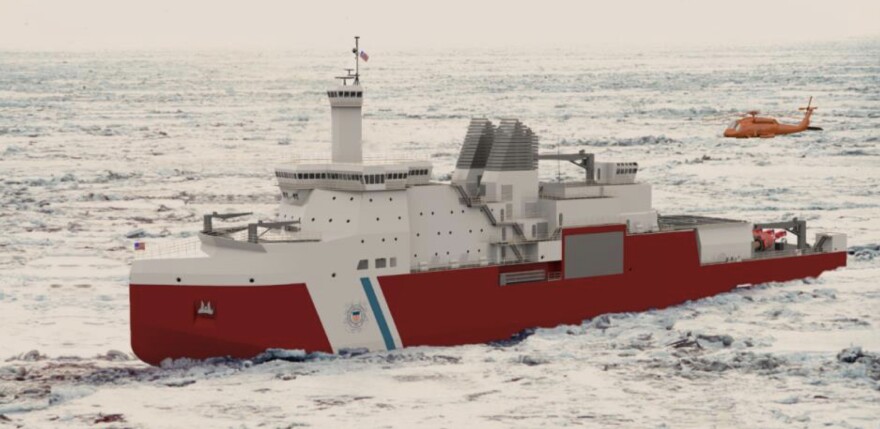The Coast Guard’s plan to build three heavy icebreakers is five years behind schedule and the price has ballooned to $5.1 billion from an initial estimate of less than $2 billion, according to projections from Congressional Budget Office and other watchdogs.
“The Coast Guard originally aimed to have the first PSC (polar security cutter) delivered in 2024, but the ship's estimated delivery date has been delayed repeatedly and is now expected to occur no earlier than fiscal year 2029,” Ron O’Rourke, a specialist at the Congressional Research Service, testified Tuesday at the House Subcommittee on Transportation and Maritime Security.
The new cost estimate from the Congressional Budget Office is 60% more than the estimate the Coast Guard gave in March.
It gets worse. Shelby Oakley of the Government Accountability Office testified that the functional design is not close to completion. Subcommittee Chairman Carlos Gimenez, R-Fla., was incredulous.
“You're saying that they are 67% design completion after five years?” Gimenez asked.
"Yes," she said.
Gimenez wondered why a company would tell the government they could design and build a ship for a certain price and then not come through.
“Was it fantasy or what?” he asked.
The question drew a wry laugh from Oakley.
“It happens all the time, unfortunately, in government acquisitions,” she said. “Contractors come back and say they can meet these requirements because they know … once the spigot turns on, once the contract is let, it's unlikely to be canceled, right?”
Oakley said agencies and Congress need to demand more realistic bids. She also cited a lack of industrial capacity. American shipbuilders don’t have experience building heavy icebreakers. They haven’t built one in 50 years.
Gimenez sought more answers from the Coast Guard.
Vice Admiral Paul Thomas blamed the initial contractor. He said the Coast Guard didn’t provide the contractor a design but suggested a Finnish icebreaker as an inspiration model. The contractor chose a German design instead.
“And then, you know, by the way, the ship that they chose for the parent design has actually never been constructed,” Thomas said. “And that's why the detailed design has taken so long.”
The polar icebreakers would be used in the Arctic and Antarctic. Alaska’s U.S. senators have argued for years that they are vital for search and rescue, fishing enforcement and to assert a U.S. presence in the Arctic. America’s lack of Arctic icebreakers puts the country at a geopolitical disadvantage as Russia and China beef up their fleets and their presence in the region.
Witnesses at the hearing named several factors as contributors to the construction delay and cost overruns, including design changes and a lack of naval architects and engineers.
The original shipbuilder that won the contract was VT Halter Marine. But another company, Bollinger Shipyards, acquired VT Halter in 2022.
Rep. Clay Higgins, R-La. defended Bollinger, which is in his district. He said the company has taken on the responsibility of finishing the project.
“It was quite a mess that they have inherited and they’re shouldering that burden. So we have to dig into the cost of this thing, and how it was so outrageously underestimated,” he said.
The vice admiral said the buck stopped with him and he pledged that construction would begin in earnest by December. It’ll be up to his successor to carry through, though, since he plans to retire this summer.
While the plan to build heavy icebreakers is delayed and over budget, another icebreaker project is just beginning. Congress this year appropriated $125 millionto buy a privately owned ice-capable tug, the Aiviq, as a stopgap measure. It would be homeported in Juneau. The Coast Guard said in March the Aiviq could be ready for use in 18 months, but it could take up to seven years to make it fully operational.


